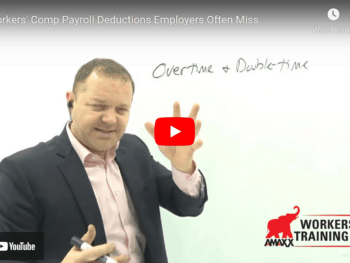Loss Sensitive Programs – The basic loss sensitive programs are:
1-Incurred Loss Retro Plans
2-Deferred Premium Payment Plans
3-Paid Loss Retro Plans
4-Others – There are variations of loss sensitive plans including “loss divisor plans” and “compensating balance plans”.
Click Link to Access Free PDF Download
“Workers’ Comp Claims Review Checklist: 9 Must-Have, Serious-Impact Elements”
The concept of a “loss sensitive” insurance program is that the insurance company takes less of the risk than in a guaranteed cost program (see Guaranteed Cost Blog) by periodically charging for losses even after the policy year ends. These are typically called “retro adjustments.” In this type of arrangement, there is still a single insurance company providing the coverage and the claims handling; in other words, it is not “unbundled” in that the company providing insurance is the same one that handles the claims.
There is a “basic” premium which covers fixed expense such as administration, loss control, profit and taxes. There is also a portion of the premium that is loss sensitive. This is based on estimated losses but can be higher and lower, paid during the adjustments. In addition to the insured company is charged for claims handling and taxes on premium.
The benefit of this type of program is that the insured is rewarded for good loss experience (not many claims) during the policy year by having a portion of the standard premium returned. The drawback is that the insured has limited control over who handles the claims as in very few instances are the carriers willing to unbundle (have a company other than the insurance company adjust the claims). Normally, when their is a large deductible, the insurance company will unbundle, but not always. Another drawback is that the cash flow can be more beneficial under other types of plans.
In the deferred premium payment plan the premium is not collected during the policy year so the insured company has use of the money during that period so although the insured still has only limited control over the claims handling arrangement, they do have more cash flow benefit than under the standard incurred loss retro program. But for companies with high losses and a slow claim payment pattern there will still be negative cash flow.
Paid Loss Retro Plan –Control starts here. With this type of arrangement, the insured begins to gain more control and not experience a negative cash flow situation. What happens is that payments are made on “paid LOSSES”, not the total amount of the INCURRED (but not paid) losses which includes the amount reserved for those losses also. In this plan, when an employee returns to work more quickly and the reserve is lower, less money will be paid out for the claim. In the paid loss retro, most carriers are more amenable to unbundling the claims handling service allowing the insured to use a third-party administrator. An insured can request greater input such as authority for settlement, selection of counsel, waiver of subrogation liens and other strategies giving the company more input into how their claims are handled.
Although there are variations of loss senstive plans including “loss divisor plans” and “compensating balance plans” those are beyond the scope of this article. Contact your insurance broker about which type of plan is best for your company. Make sure to tell them you would like input into how your claims are handled.
Author: Robert Elliott, J.D.
For more information about what you CAN do, go to www.ReduceYourWorkersComp.com
WC Calculator www.ReduceYourWorkersComp.com/calculator.php
TD Calculator www.ReduceYourWorkersComp.com/transitional-duty-cost-calculator.php
WC 101 www.ReduceYourWorkersComp.com/workers_comp.php
Do not use this information without independent verification. All state laws are different. Consult with your corporate legal counsel or other professionals before implementing any cost containment programs.
©2008 Amaxx Risk Solutions, Inc. All rights reserved under International Copyright Law. If you would like permission to reprint this material, contact Info@WorkersCompKit.com.













